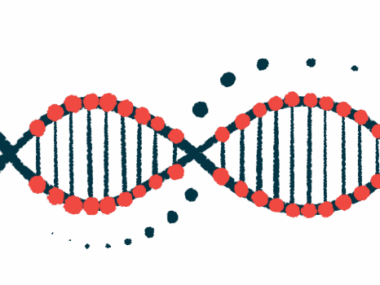Measuring Lyso-Gb1 in Dried Blood Spots Can Help Monitor ERT Effectiveness
Written by |

Measuring the levels of glucosylsphingosine (Lyso-Gb1) — a diagnostic biomarker of Gaucher disease — in dried blood spots is a reliable method to monitor the effectiveness of enzyme replacement therapy (ERT) in people with the disease, a study shows.
The findings, based on Lyso-Gb1 monitoring over more than three years including a period of involuntary treatment interruption, validate previous evidence supporting Lyso-Gb1 as a response-to-therapy biomarker.
This approach allows clinicians to detect any reduction or loss in ERT’s effectiveness before disease worsening, researchers said.
The study, “Treatment Efficiency in Gaucher Patients Can Reliably Be Monitored by Quantification of Lyso-Gb1 Concentrations in Dried Blood Spots,” was published in the International Journal of Molecular Sciences.
Gaucher disease is caused by deficiency in the beta-glucocerebrosidase enzyme, leading to the accumulation of two fat molecules, glucosylceramide and Lyso-Gb1, ultimately impairing the normal functioning of several organs.
Lyso-Gb1 has been identified as a consistent and specific diagnostic biomarker and a contributor to the development of Gaucher disease. Several studies have also supported Lyso-Gb1 as a reliable response biomarker — a way to monitor progress and improvement throughout treatment.
However, few studies have monitored Lyso-Gb1 levels for long periods and evaluated their value in identifying any reduction or loss of therapeutic effect.
Dried blood spots — a blood drop from a finger prick with a lancet placed on a filter card — are an easier way to collect, ship, and store blood samples, with the advantage of allowing patients to easily collect their own samples.
While measuring Lyso-Gb1 levels in dried blood spots provides several advantages over standard blood samples, a proper validation of this approach is still lacking.
In the study, Centogene, in collaboration with researchers at University Hospital ‘Mother Teresa,’ in Albania, evaluated whether measuring Lyso-Gb1 levels from patients’ dried blood spots is a reliable way to monitor ERT effectiveness over time, including during a period of involuntary treatment interruption.
The study involved 19 people (12 men and seven women) with Gaucher disease followed at the hospital and stably treated with Elelyso (taliglucerase alfa), an ERT. The median age at the study’s start was 22, ranging from 6 to 78 years. Between December 2018 and March 2019, all patients had to interrupt their ERT because of treatment unavailability due to temporary administrative issues.
Lyso-Gb1 levels were measured using Centogene’s dry blood spots filter card (CentoCard) and in regular intervals — mostly done less than three months apart — for about three years. This led to an average of 27 measurements per patient for a total of 517 assessments during the study.
The team first validated the method using international standards. The approach was found to reliably measure Lyso-Gb1 levels and result in small variations between measurements as well as between fresh and three-month-old samples.
Long-term monitoring on stable treatment showed that Lyso-Gb1 levels tended to drop over time, with more pronounced drops in some patients than others. Notably, these levels varied greatly over time for each patient, which was consistent with previous reports and suggestive of a patient-specific phenomenon.
The researchers hypothesized that such temporal variations may be associated with disease processes, the circadian rhythm (the 24-hour internal clock that regulates physical, mental, and behavioral changes), and the effects of nutrition and/or physical activity.
As a potential strategy to lower these variations and reliably monitor treatment effectiveness, the team compared mean values from reference intervals of time — periods of 13, 30, and 100 days — instead of a single measurement.
Results showed that the variations tended to drop over longer time intervals (100-day intervals), and in the periods with a higher number of measurements.
“These observations argue in favor of basing monitoring efforts on the combination of long reference intervals and frequent measuring,” the researchers wrote.
The approach also allowed reliable discrimination between periods of stable treatment and treatment discontinuation, in which Lyso-Gb1 levels were increased in all patients and to a greater degree than the usual variation.
Notably, none of the patients reported disease worsening during their break from treatment, likely due to the interruption’s relative short duration, the team said.
“We conclude that Lyso-Gb1 determination from DBSs [dried blood spots] indicates treatment issues already at an early stage before clinical consequences arise,” the scientists wrote, adding that the data establish “DBS-based Lyso-Gb1 quantification as a feasible and highly valid strategy for therapeutic monitoring of [Gaucher disease] patients.”



